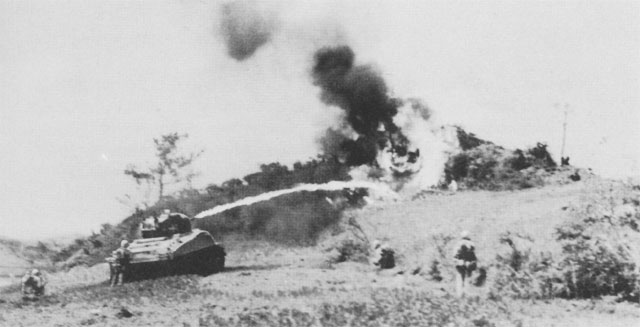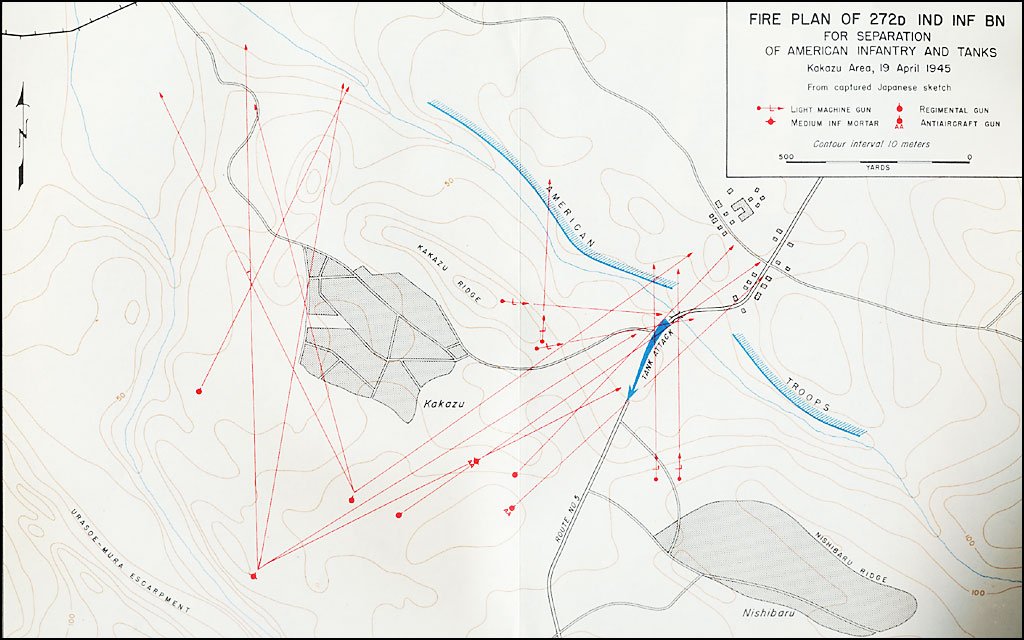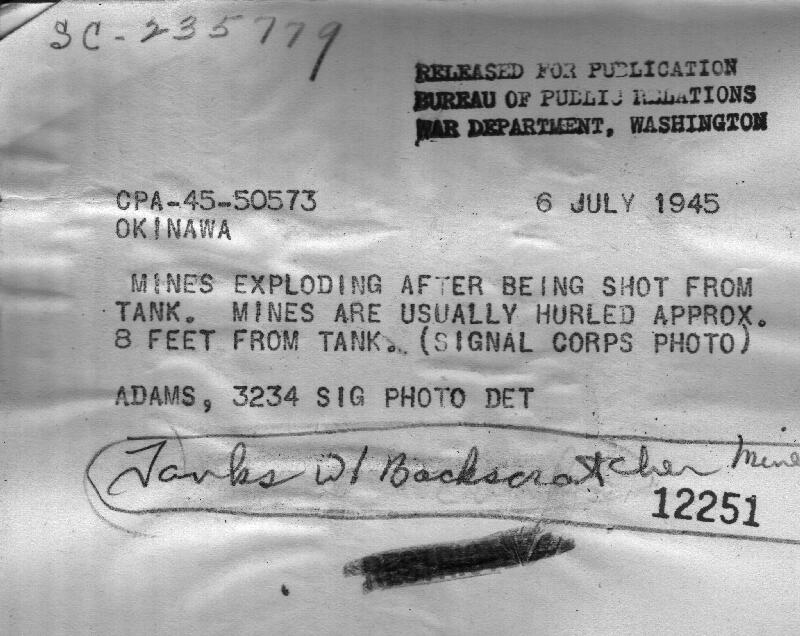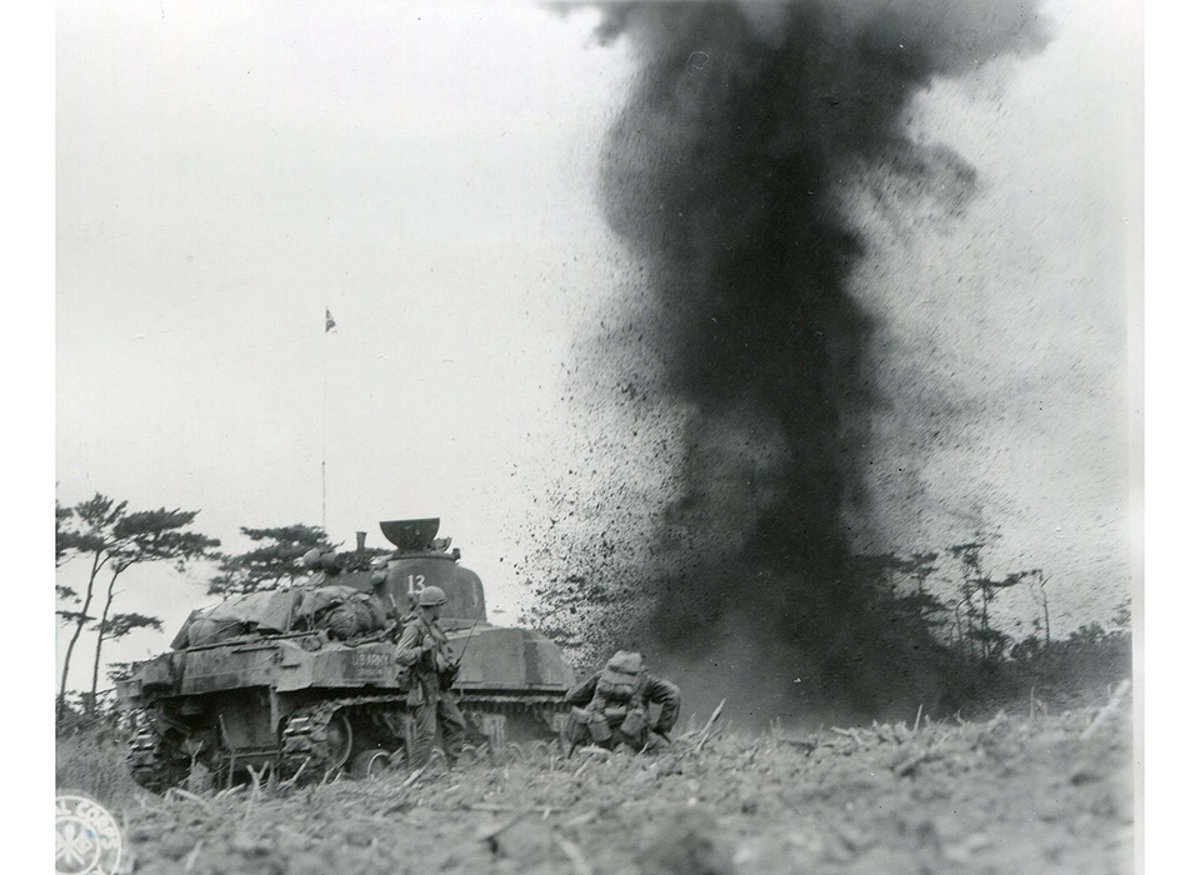
This thread is another visit into the pyrrhic victory known as Operation Iceberg, the Apr 1945 invasion of Okinawa.
This thread is based on my Aug 2013 Chicagoboyz column "Technological Surprise & the Defeat of the 193rd Tank Battalion at Kakuzu Ridge"
chicagoboyz.net/archives/38455…
1/

This thread is based on my Aug 2013 Chicagoboyz column "Technological Surprise & the Defeat of the 193rd Tank Battalion at Kakuzu Ridge"
chicagoboyz.net/archives/38455…
1/


On 19 April 1945, the US Army’s 27th Inf Div launched an attack against the Kakuza Ridge position held by the 32nd Army on Okinawa with the 193rd Tank Btn's 30 tanks, S.P. assault guns, and attached armored flame throwers from the 713th Flame Tank Btn.
2/
2/

When the battle was over, 22 of the 30 AFV had been destroyed in a coordinated ambush by Japanese AT- guns, artillery, mortars & suicide close assault teams. Among the dead was the commander of the 193rd, on whom blame was laid for attacking without infantry in close support.
3/


3/



After the catastrophe at Kakuzu Ridge, th 193rd TB was effectively disbanded & their remaining tanks were used as replacements by other US Army TBs.
This battle is referenced in most narrative account of Okinawa as proof of the tougher defenses US soldiers and marines
4/
This battle is referenced in most narrative account of Okinawa as proof of the tougher defenses US soldiers and marines
4/

...would face in an invasion of Japan.
It turns out that while this particular narrative has a great deal of truth, it isn’t the whole truth
Reversing Churchill, this narrative has a huge lie buried in a bodyguard of truth.
5/
It turns out that while this particular narrative has a great deal of truth, it isn’t the whole truth
Reversing Churchill, this narrative has a huge lie buried in a bodyguard of truth.
5/

The most important truth of this battle was that US troops suffered a technological surprise. The IJA were listening to the SCR-300, SCR-500 and SCR-600 series FM radios of US infantry, tanks and artillery forward observers at Kakuzu Ridge (& other battles through out the
6/


6/



Pacific in 1945) with Japanese Type 94 (1934) Mark 6 walkie-talkie radio that was issued to every IJA Inf. btn.
US tanks were equipped with FM radios & their operators were told the IJA didn't have any FM gear & took no security precautions.
n-mmra.net/radio/94-6/94-…
7/
US tanks were equipped with FM radios & their operators were told the IJA didn't have any FM gear & took no security precautions.
n-mmra.net/radio/94-6/94-…
7/

The poor performance of the 193rd Tank Btn on Okinawa at Kakuzu Ridge could be easily explained if that were the case.
So, serious charges require serious proof. Where's the proof?
"Show me the money!"
8/
So, serious charges require serious proof. Where's the proof?
"Show me the money!"
8/
This is the transcript of the 2005 PBS Show “Victory in the Pacific” that includes an interview of an Okinawan Student Conscript Katsuo Nagata who carried 10kg suicide bombs to Kakazu Ridge the night before the failed 193rd Tank Battalion/105th Infantry Regiment attack.
9/


9/



So, the night before the 193rd TB's attack, the IJA independent 272th Inf Regt. knew US tanks were coming, check.
Where is the proof the IJA was using it's Type 94 (1934) Mark 6 walkie-talkie radio to monitor & exploit US Army radio communications?
10/

Where is the proof the IJA was using it's Type 94 (1934) Mark 6 walkie-talkie radio to monitor & exploit US Army radio communications?
10/


First let look at IJA radio via History of Technical Intelligence SWPA 1942 - 1945 Pg 90
"Lt Ford found that the Japanese type 97 portable wireless telephone set could receive signals clearly from US frequency modulated SCR-610 & SCR-300 sets at distances of 2300
11/

"Lt Ford found that the Japanese type 97 portable wireless telephone set could receive signals clearly from US frequency modulated SCR-610 & SCR-300 sets at distances of 2300
11/


...to 3000 yards. This was important, as messages in the past had frequently been sent in the clear on these two sets. The 41st Division Signal officer, the G-2, and the Division artillery were given this information."
The capabilities of the type 94 walkie-talkie radio were
12/
The capabilities of the type 94 walkie-talkie radio were
12/

...noticed in Luzon as well.
Intelligence bulletin. Vol III, No 12, Aug 1945 issue, noted that:
JAP WALKIE-TALKIE
Tests conducted with four Japanese Type 94 (1934) Mark 6 radios on Luzon reveal that it is possible for this amplitude modulated set to
cgsc.contentdm.oclc.org/cdm/compoundob…
13/
Intelligence bulletin. Vol III, No 12, Aug 1945 issue, noted that:
JAP WALKIE-TALKIE
Tests conducted with four Japanese Type 94 (1934) Mark 6 radios on Luzon reveal that it is possible for this amplitude modulated set to
cgsc.contentdm.oclc.org/cdm/compoundob…
13/
...communicate with both the U. S. SCR-610 and SCR-608 FM sets. A small two-unit set of the Walkie-Talkie design, the Type 94 Mark 6 is standard equipment within the Japanese infantry battalion.
Results, of the tests show that the enemy sets operate satisfactorily with the
14/
Results, of the tests show that the enemy sets operate satisfactorily with the
14/

...SCR-610 within a range of 1/4 to 1 & 1/2 miles, and with the SCR-608 within a range of 1/2 to 4 & 1/2 miles"
The article also detailed how to covert & maintain the IJA Walkie-Talkie with US Army batteries & vacuum tubes!
15/
The article also detailed how to covert & maintain the IJA Walkie-Talkie with US Army batteries & vacuum tubes!
15/

So, the IJA had both radio means (link) & the motives. How do you prove the IJA about used its opportunities?
To understand this, you need to become familiar with the US Army vs USMC naming conventions for M4 Sherman main armament flame tanks.
lonesentry.com/manuals/handbo…
16/
To understand this, you need to become familiar with the US Army vs USMC naming conventions for M4 Sherman main armament flame tanks.
lonesentry.com/manuals/handbo…
16/
The USMC called it's Iwo Jima M4 Sherman main armament flame tanks "C.B. Mk-1" AKA Construction Battalion Mark One.
Over the radio it was simply "Mark One"
17/
Over the radio it was simply "Mark One"
17/
The US Army Chemical Warfare Service used a complicated designation that was more abused than used. It runs as follows:
Flamethrower, mechanized, main armament, CWS-POA "75" H1-H2
CWS - (see above)
POA - Pacific Ocean Area
"75" H-1 - See CB-H-1 Gun
H-2 - See fuel tanks
18/

Flamethrower, mechanized, main armament, CWS-POA "75" H1-H2
CWS - (see above)
POA - Pacific Ocean Area
"75" H-1 - See CB-H-1 Gun
H-2 - See fuel tanks
18/


Now we turn to IJA General Mitsuru Ushijima (same man both uniforms)
Ushijima issued 32D ARMY COMBAT DIRECTIVE No. 13. Which was captured, translated and reprinted in “Information on Japanese Defensive Installations and Tactics”, ARMY WAR COLL CARLISLE BARRACKS PA.
20/

Ushijima issued 32D ARMY COMBAT DIRECTIVE No. 13. Which was captured, translated and reprinted in “Information on Japanese Defensive Installations and Tactics”, ARMY WAR COLL CARLISLE BARRACKS PA.
20/


Ushijima directive (see text clips) came out after the US landings but before Marines used flame tanks in Southern Okinawa.
The 10th Army & XXIVth Corps Army units never called flame tanks "Mark One's"
So where was Ushijima getting "M-1" in DIRECTIVE No. 13 ?
21/

The 10th Army & XXIVth Corps Army units never called flame tanks "Mark One's"
So where was Ushijima getting "M-1" in DIRECTIVE No. 13 ?
21/


The only answer that works is that the IJA garrison on Iwo Jima heard USMC tank crew in the clear over their FM radios. Then the garrison there passed that information to Japan.
After reviewing IJA GHQ passed the intelligence to Gen Ushijima's 32nd Army staff.
22/

After reviewing IJA GHQ passed the intelligence to Gen Ushijima's 32nd Army staff.
22/


This brings up very difficult historical questions for the last year of the Pacific War starting with Navajo code talkers at Iwo Jima.
While they were a safe code there...
...they were not EVERY CODE at Iwo Jima.
23/
While they were a safe code there...
...they were not EVERY CODE at Iwo Jima.
23/

How many US Marine infantry attacks were anticipated by Lieut. Gen. Tadamichi Kuribayashi's garrison because they were listening to USMC tankers talking in the clear on FM radios they thought secure?
24/

24/


No historical research on the last 12 months of ground warfare in the Pacific War that uses official American military histories can be relied upon. Extensive primary research on both any surviving Japanese and American military documents must be done with the idea
25/
25/
...that low level American FM radio communications could and were monitored. Only then can you select items from the official histories for use.
“Trust, but verify” applies as much to military history as it does to nuclear arms control treaties.
/End
“Trust, but verify” applies as much to military history as it does to nuclear arms control treaties.
/End
• • •
Missing some Tweet in this thread? You can try to
force a refresh















